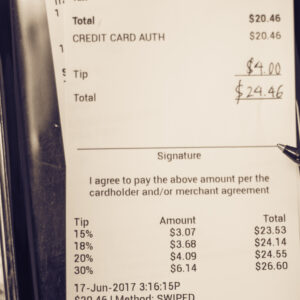Allocation Means Consistency in Tip & Gratuity Allocation
For many employed by the restaurant and hospitality industries, gratuity is a main component of overall pay.
Tipped wage varies by state and is as low as $3-$4 an hour in some states.
Wait staff and others, rely on tips to make up the gap between this tipped wage and the minimum wage.
At the beginning of the COVID-19 pandemic, much of the restaurant and hospitality industries shut down. As these businesses began to reopen, consumers tipped generously to make up for revenue lost from the shutdown.
During this time, consumers frequently tipped over and above the 18-20% norm designated by hospitality industry experts.
As the hospitality environment shifts to meet new needs stemming from COVID-19, including evolving tipping norms, automation becomes even more important.
In particular, as these businesses recover financially, tip and gratuity automation reduces cost and inefficiencies. It eliminates the errors and other shortcomings associated with manual payroll spreadsheet management.

Automation ensures accurate payroll for employees. As such, it also ensures accurate distribution compliance with industry and government laws and regulations.
This is always important, but more significantly so amidst the uncertainties of COVID-19. Accurate payroll builds trust between employee and employer.
This is especially true for the food and beverage (F&B) facet of hospitality. With F&B’s thin margins, leveraging automation to accurately account for tips and gratuities maintains the health of these margins.
In a pre or a post COVID-19 environment, automation is particularly important in a tip pool scenario.
In this scenario, tips are grouped together and then divided among staff. Tip and gratuity automation facilitates efficient tip and gratuity distribution between staff members. It also means accurate tip and gratuity calculation.
For banquets, outlets, and restaurants, automating tip and gratuity calculation and allocation facilitates consistent accuracy and efficiency, despite the impact of COVID-19. In a time of pandemic turmoil, it creates a sense of trust between employer and employee.

